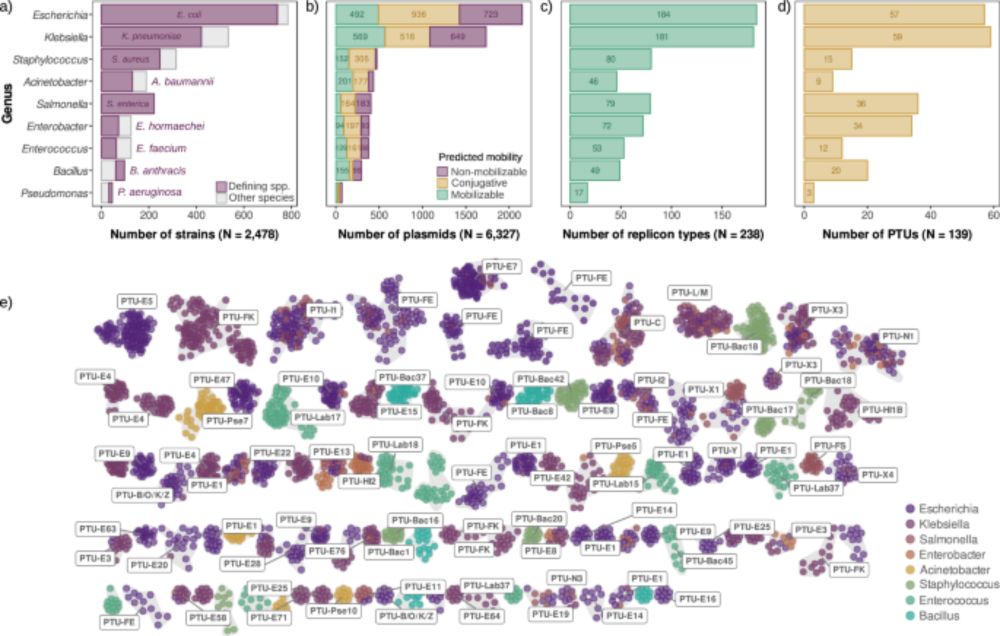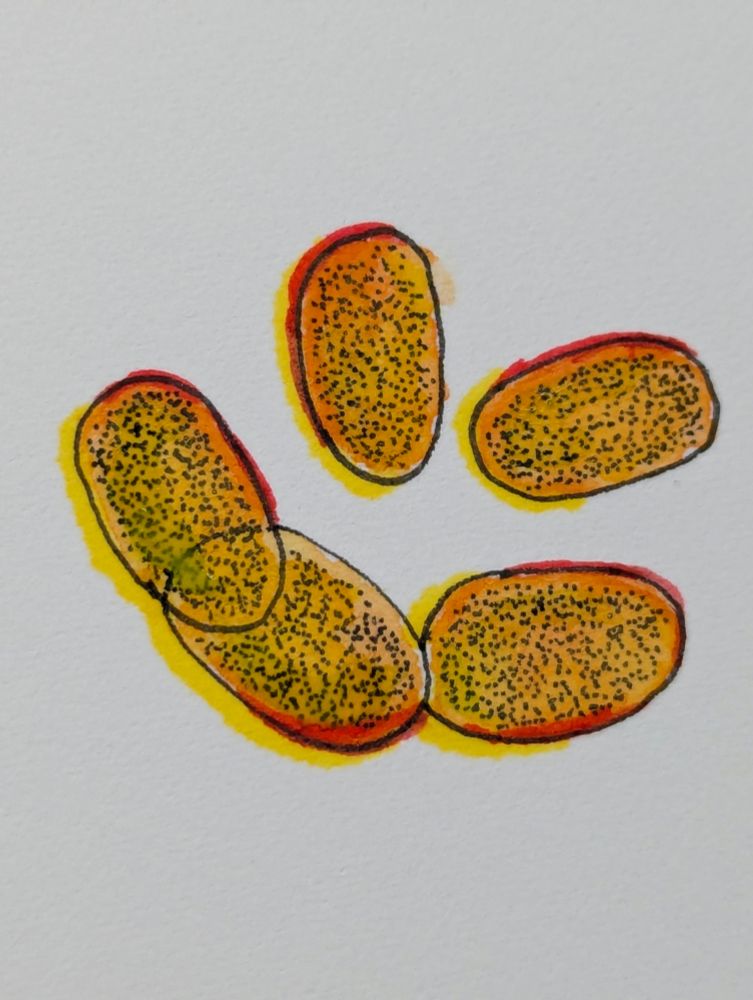Authorized GMB (Genetically Modified Bacteria) scientist
We solved the cryoEM structure of the T7SSb core unit (T7bCU) composed of YukB, YukC, and YukD from Bacillus subtilis, revealing how these components assemble within the secretion machinery.
www.science.org/doi/10.1126/...

We solved the cryoEM structure of the T7SSb core unit (T7bCU) composed of YukB, YukC, and YukD from Bacillus subtilis, revealing how these components assemble within the secretion machinery.
www.science.org/doi/10.1126/...
pubs.acs.org/doi/10.1021/...

www.science.org/doi/10.1126/...

www.science.org/doi/10.1126/...
Our HIDEN-SEQ links the "dark matter" genes of your favorite phage to any selectable phenotype, guiding the path from fun observations to molecular mechanisms.
A thread 1/8

Our HIDEN-SEQ links the "dark matter" genes of your favorite phage to any selectable phenotype, guiding the path from fun observations to molecular mechanisms.
A thread 1/8


Bacteria can “remember” past environments through genetic & biochemical imprints helping them adapt and thrive! 🦠🧠
#MicroSky
www.nature.com/articles/s41...

🧪 www.nature.com/articles/d41...

🧪 www.nature.com/articles/d41...
Bacteria can “remember” past environments through genetic & biochemical imprints helping them adapt and thrive! 🦠🧠
#MicroSky
www.nature.com/articles/s41...

Bacteria can “remember” past environments through genetic & biochemical imprints helping them adapt and thrive! 🦠🧠
#MicroSky
www.nature.com/articles/s41...
#biofilms #oralmicrobiome
rdcu.be/eQllg

#biofilms #oralmicrobiome
rdcu.be/eQllg
Thanks to FRM @frm-officiel.bsky.social and CNRS @cnrsbiologie.bsky.social
academic.oup.com/nar/article-...

Thanks to FRM @frm-officiel.bsky.social and CNRS @cnrsbiologie.bsky.social
academic.oup.com/nar/article-...
If a microbe mutated while in space (as has happened already: astrobiology.com/2024/04/bact...) & was subsequently introduced back to Earth, should it be considered a non-native species?
My answer would be yes. [1/🧵]

If a microbe mutated while in space (as has happened already: astrobiology.com/2024/04/bact...) & was subsequently introduced back to Earth, should it be considered a non-native species?
My answer would be yes. [1/🧵]
Plasmids promote bacterial evolution through a copy number-driven increase in mutation rate.
We combine theory, simulations, experimental evolution, and bioinformatics to demonstrate that mutation rates scale with plasmid copy number.
Let's dive in! 🧵👇

Plasmids promote bacterial evolution through a copy number-driven increase in mutation rate.
We combine theory, simulations, experimental evolution, and bioinformatics to demonstrate that mutation rates scale with plasmid copy number.
Let's dive in! 🧵👇

doi.org/10.1038/s414...
We analyzed thousands of diverse bacterial plasmids to shed light for the first time on a key aspect of plasmid biology: plasmid copy number. 1/7 👇

doi.org/10.1038/s414...
We analyzed thousands of diverse bacterial plasmids to shed light for the first time on a key aspect of plasmid biology: plasmid copy number. 1/7 👇
Anti-CRISPR protein hijacks host’s enolase to tackle and block CRISPR-Cas
www.nature.com/articles/s41...

Anti-CRISPR protein hijacks host’s enolase to tackle and block CRISPR-Cas
www.nature.com/articles/s41...

More commentary to come!
#PlantBiology #Drought #Corn #Maize #Microbiome #PlantScience #SoilHealth #PlantHealth

More commentary to come!
#PlantBiology #Drought #Corn #Maize #Microbiome #PlantScience #SoilHealth #PlantHealth















